April 9th, 2017
By James Atlas
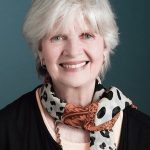
and Patricia Bosworth will discuss breaking the rules of biography and making it work anyway.

In a panel called “Biography and Style,” James Atlas . . .
Patricia Bosworth (“Patti,” as she is known to her wide circle of friends) has been a vivid presence on the New York literary scene for as long as I can remember—which is beginning to be a very long time. Her parties, held in a book- and art-filled apartment in Hell’s Kitchen that looks as if it had time-traveled from the West Village of the 1920s, are the kind where you walk in and want to talk to everyone in the room at once. Some of them are high-profile—I have spotted Dick Cavett and Judy Collins, among other “notables,” as we call them in Chicago; others were mere “writers,” but some of the most interesting ones in town. They are the kind of parties where the host has to flick the lights on and off in order to remind guests to leave.
What’s the draw? I once moderated a panel on biography in some gilded Pittsburgh auditorium with Patti, who had written a fine biography of Brando for the Penguin Lives series, and two other Penguin alums, Wayne Koestenbaum (Warhol) and Bobbie Ann Mason (Elvis). The auditorium was packed (if you want to get an audience, leave New York), and though it was some years ago now, I remember her making the culture-hungry crowd laugh and laugh at her descriptions of Brando’s outlandish behavior.
She is as fun to be with one-on-one as in front of 600 people, at once brassy and vulnerable, warm and entertainingly direct. So it is with her books: the biographies of Jane Fonda and Montgomery Clift radiate insight and empathy; the memoirs are tragic but also manage to capture the vanity of the Actors Studio where she apprenticed for a stage career in the 1950s.
Patti’s most admirable trait is her candor. At the party for her latest book, The Men in My Life, she stood up at the podium and spoke of the suicides of her brother and father with a matter-of-factness that took her well-wishers by surprise: You can’t just talk about these things in public. But she did, and I’m sure she will—about that and much, much more—when I interview her at the BIO conference in Boston this spring. Don’t miss it.
Published under: Conference, News
Tags: James Atlas, Patricia Bosworth
February 10th, 2017
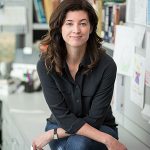
Candice Millard’s Hero of the Empire was named Amazon’s number one history book of 2016.
BIO is thrilled to announce that Candice Millard has won the 2017 BIO Award for her slice-of-life biographies of Winston Churchill and presidents James Garfield and Theodore Roosevelt. In her bestselling books—Hero of the Empire, Destiny of the Republic, and The River of Doubt—the breadth and depth of her research are matched by her gift for creating fast-paced narratives that bring events in distant eras to vivid life.
BIO bestows its annual award on a colleague who has made a major contribution to the advancement of the art and craft of biography. Millard joins previous award winners Jean Strouse, Robert Caro, Arnold Rampersad, Ron Chernow, Stacy Schiff, Taylor Branch, and Claire Tomalin.
Millard will receive the honor during the 2017 BIO Conference on May 20 at Emerson College in Boston, where she will deliver the keynote address.
Millard’s first book, The River of Doubt: Theodore Roosevelt’s Darkest Journey (2005), was a Barnes & Noble Discover Great New Writers selection and a Book Sense Pick, won the William Rockhill Nelson Award, and was a finalist for the Quill Awards. Her second book, Destiny of the Republic: A Tale of Madness, Medicine & the Murder of a President (2011), won the Edgar Award for Best Fact Crime, the PEN Center USA award for Research Nonfiction, and the One Book – One Lincoln Award, among other honors. Millard’s most recent book, Hero of the Empire: The Boer War, a Daring Escape and the Making of Winston Churchill (2016), was chosen as a top ten critics pick by the New York Times. Millard’s work has also appeared in the New York Times Book Review,Washington Post Book World, National Geographic, and Time magazine.
Published under: BIO Award, Conference
Tags: Candice Millard
January 31st, 2017
Registration is now open for the Eighth Annual BIO Conference, taking place
May 19-21 at Emerson College in Boston. For more information, go here.
Published under: Conference
Tags: 2017 BIO Conference, Boston, Emerson College
January 11th, 2017
On May 19–21, the annual BIO Conference returns to Boston, where the organization held its first gathering in 2010. The conference will offer research workshops, a full day of panels, numerous networking opportunities, a conversation between two highly respected biographers, and a keynote address by the 2017 BIO Award winner, whose name will be revealed in February.
“This year’s program is bound to please the membership,” said James McGrath Morris, co-chair of the Program Planning Committee. “The wide variety of topics, terrific panelists, and workshop leaders is both a testimony to the hard work of the program committee and to the excitement generated by our annual conference. If you are a biographer, or aspire to be one, you’ll want to be in Boston.”
Registration for the conference is scheduled to begin on February 1. Current BIO members will receive an email with a link to the registration site to take advantage of the early-bird discount, which runs through February 20. For more information on the agenda and panelists, go here.
Published under: Conference, News
Tags: David Nasaw, Emerson College, Larry Tye
December 7th, 2016
 More than two dozen distinguished biographers from the United States and Europe met to talk about their work on November 4-5 at a conference co-sponsored by BIO and the Oxford Centre for Life-Writing. The weekend-long conference, called Biography Beyond Borders, a colloquium on American and European biography, took place in Oxford and London and included a pre-conference lecture by Carla Kaplan and a keynote address by Hermione Lee. Her Penelope Fitzgerald: A Life won BIO’s Plutarch Award for best biography of 2014.
More than two dozen distinguished biographers from the United States and Europe met to talk about their work on November 4-5 at a conference co-sponsored by BIO and the Oxford Centre for Life-Writing. The weekend-long conference, called Biography Beyond Borders, a colloquium on American and European biography, took place in Oxford and London and included a pre-conference lecture by Carla Kaplan and a keynote address by Hermione Lee. Her Penelope Fitzgerald: A Life won BIO’s Plutarch Award for best biography of 2014.
Last month, TBC featured photos from the weekend sent by consulting editor, past president, and BIO co-founder James McGrath Morris. He called the colloquium “a remarkable moment in our organization’s history. Biographers from around Europe broke intellectual and literary bread with their American colleagues in the storied setting of Oxford.” Morris added, “Almost all the credit for putting together this remarkable gathering goes to BIO’s vice president, Deirdre David.” Plans are now underway for another such meeting in 2018.
To read recaps of the panel discussions and some comments from some of the BIO members who toured two historic homes before the colloquium, go here.
Published under: Conference, News
Tags: Biography Beyond Borders
November 9th, 2016
On November 4-5, BIO and the Oxford Centre for Life-Writing co-sponsored Biography Beyond Borders, a colloquium on American and European biography. The weekend in Oxford and London featured 29 distinguished biographers from across the United States and Europe examining their craft in lectures and panel discussions. Look for more news on the weekend next month.
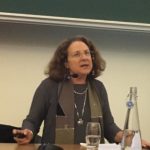
Carla Kaplan opened the weekend on November 4 with a talk on the life of Jessica Mitford, the famous American muckraking journalist who grew up in a British aristocratic family.
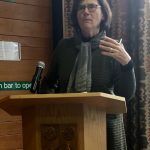
Hermione Lee spoke during lunch on November 5. Lee, who is president of Wolfson College, University of Oxford, where the Oxford Centre for Life-Writing is located, won BIO’s Plutarch Award in 2015.
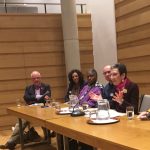
Left to right are British professor and biographer Iwan Morgan, French doctoral student Maryam Thirriard, American professor and biographer Sonja Williams, Dutch professor Dennis Kersten, and American biographer Gayle Feldman, who moderated the panel discussing history and biography. The panel was one of four looking at American and European biography during the day-long conference.
Published under: Biography, Conference
Tags: Biography Beyond Borders, Carla Kaplan, Hermione Lee, Oxford Centre for Life-Writing
October 12th, 2016
 Biography Beyond Borders, a colloquium on American and European biography,
Biography Beyond Borders, a colloquium on American and European biography,
will feature 29 distinguished biographers from across the United States and
Europe. In alphabetical order, they are: James Atlas, Betty Boyd-Caroli, Anne de
Courcy, Natalie Dykstra, Robert Douglas-Farihurst, Gayle Feldman, Rebecca
Fraser, Anne C. Heller, Carla Kaplan, Dennis Kersten, Robert Lacey, Zachary
Leader, Andrew Lownie, Jana Wohlmuth Markupova, Iwan Morgan, James
McGrath Morris, Joanny Moulin, Catherine Reef, Harriet Reisen, Jane Ridley,
Anne Boyd Rioux, Carl Rollyson, Max Saunders, Anne Sebba, Will Swift,
Maryam Thirriard, Amanda Vaill, Qunicy Whitney, and Sonja D. Williams. You
can read their biographies here.
Presented by BIO in collaboration with the Oxford Centre for Life-Writing at
Oxford, Biography Beyond Borders will take place on Saturday, November 5. The
lunchtime keynote speaker will be the 2014 BIO Plutarch Award Best Biography
winner and director of the Oxford Centre for Life-Writing, Hermione Lee.
The $100 fee for the colloquium also includes a Friday afternoon lecture and
reception at the Centre for Life-Writing Research at King’s College, London,
featuring Carla Kaplan as the speaker. Her lecture is titled, “‘Something to Offend Everyone’: The Muckraking Life of Jessica Mitford.” In addition, anyone who wants to go on the BIO November 3 group tour of the Jacobean home of Rudyard Kipling and romantic Scotney Castle with royal guide Harold Brown and Will Swift should email Swift. Learn more about the tours and the entire weekend and register here.
Published under: Biography, Conference, News
Tags: Biography Beyond Borders, Carla Kaplan, Hermione Lee, Oxford
June 12th, 2016
Read highlights of the Seventh Annual BIO Conference, held in Richmond, Virginia, on June 3-5, here.
Several videos are also available. We will post more in the coming weeks. Anyone can see excerpts on the Conference page, while BIO members can access complete videos in the Member Area.
Published under: Conference



 More than two dozen distinguished biographers from the United States and Europe met to talk about their work on November 4-5 at a conference co-sponsored by BIO and the Oxford Centre for Life-Writing. The weekend-long conference, called Biography Beyond Borders, a colloquium on American and European biography, took place in Oxford and London and included a pre-conference lecture by Carla Kaplan and a keynote address by Hermione Lee. Her Penelope Fitzgerald: A Life won BIO’s Plutarch Award for best biography of 2014.
More than two dozen distinguished biographers from the United States and Europe met to talk about their work on November 4-5 at a conference co-sponsored by BIO and the Oxford Centre for Life-Writing. The weekend-long conference, called Biography Beyond Borders, a colloquium on American and European biography, took place in Oxford and London and included a pre-conference lecture by Carla Kaplan and a keynote address by Hermione Lee. Her Penelope Fitzgerald: A Life won BIO’s Plutarch Award for best biography of 2014.

